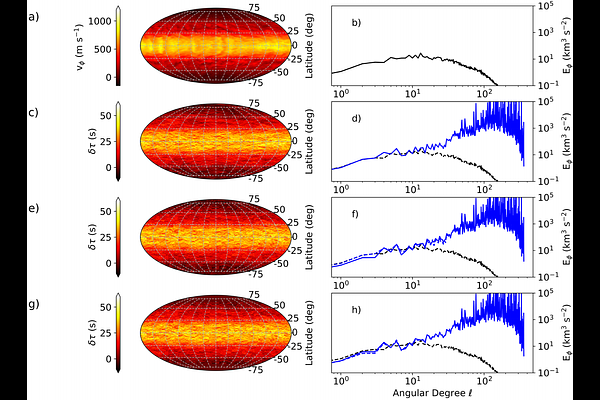Resolution of the Solar Convective Conundrum? New Results Using the Time-Distance Deep-Focus Method

Resolution of the Solar Convective Conundrum? New Results Using the Time-Distance Deep-Focus Method
John T. Stefan, Alexander G. Kosovichev, Gustavo Guerrero, Andrey M. Stejko
AbstractWe re-examine the deep-focus methodology of time-distance helioseismology previously used to estimate the power spectrum of the solar convection at a depth of about 30 Mm, which was found to be significantly weaker than predicted by theory and simulations. The Global Acoustic, Linearized Euler (GALE) and Eulerian Lagrangian (EULAG) codes are used to generate ground-truth simulations through which the accuracy of the convective power spectrum can be evaluated. This validation process shows that the power spectrum diverges significantly from ground truth beyond spatial scales corresponding to the spherical harmonic degree $\ell=15$ - $30$ because of the limited resolution of helioseismic measurements. However, the power estimated at larger spatial scales ($\ell<15$) is sufficiently accurate. We then apply the methodology to solar data and find a spectrum that is substantially stronger than previously reported. We discuss some possible differences in methodology that might have led to the initial under-estimation of solar convective power. The new spectra are in line with recent hydrodynamic and magnetohydrodynamic simulations of solar convection and also consistent with the previous inferences obtained by the ring-diagram local-helioseismology method.